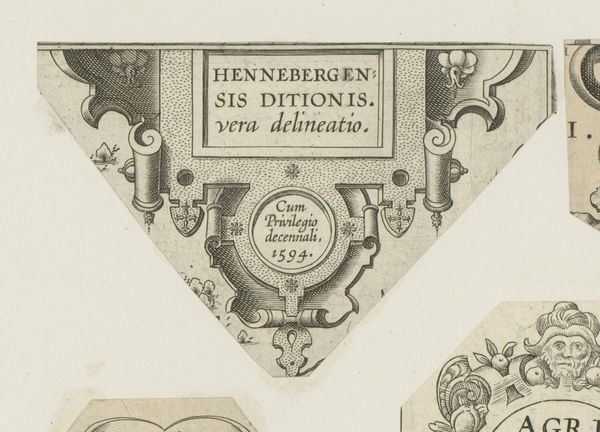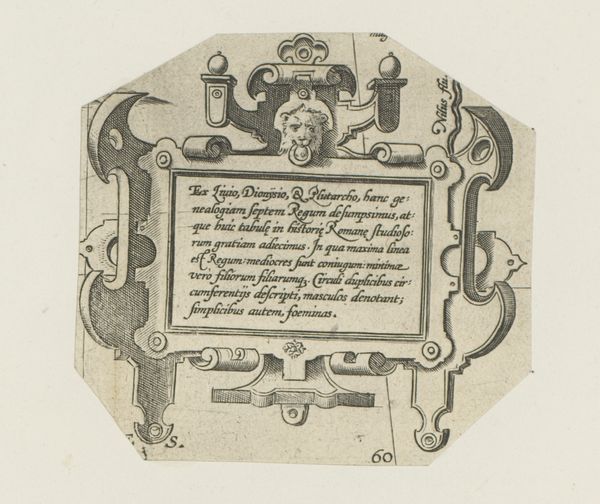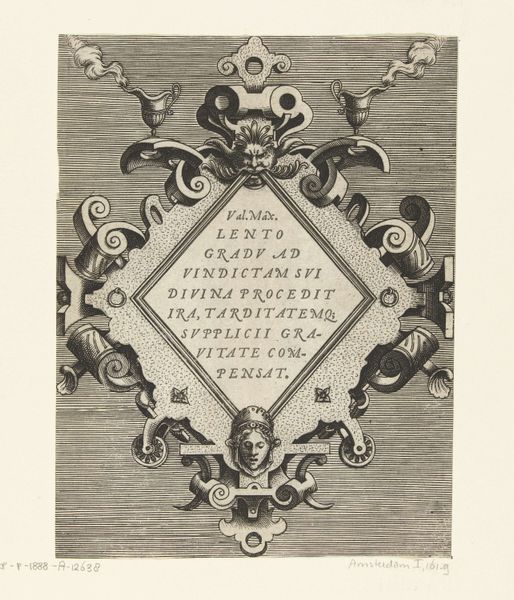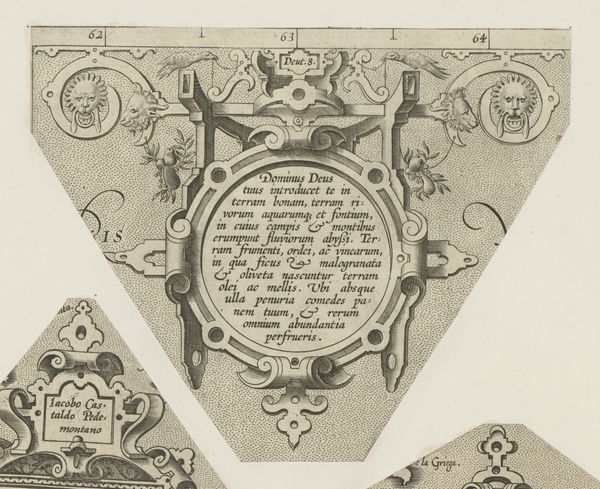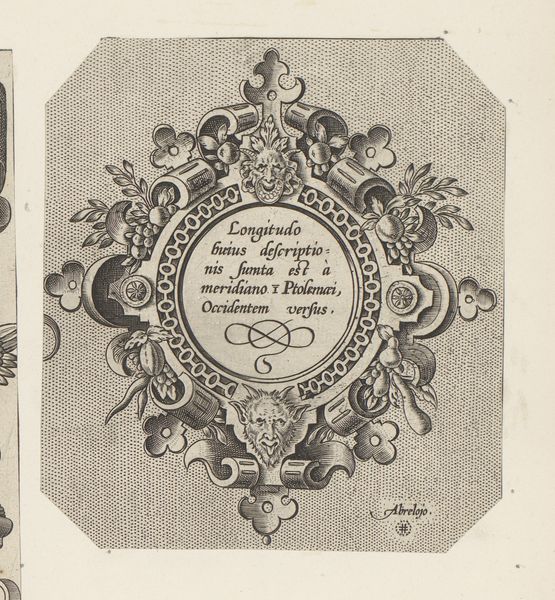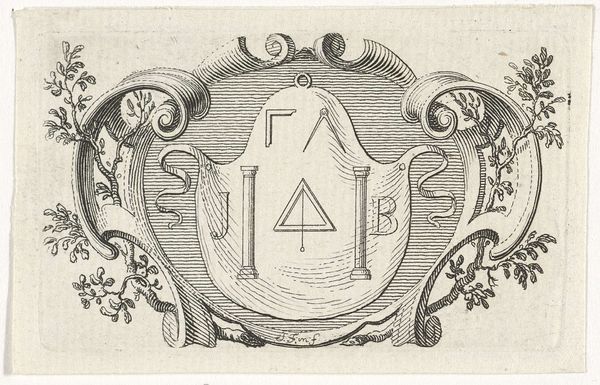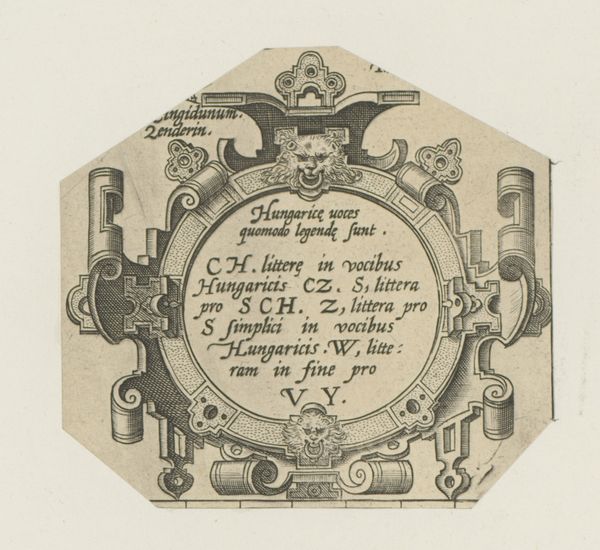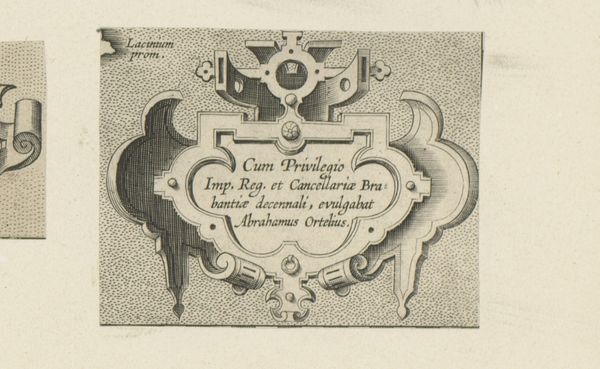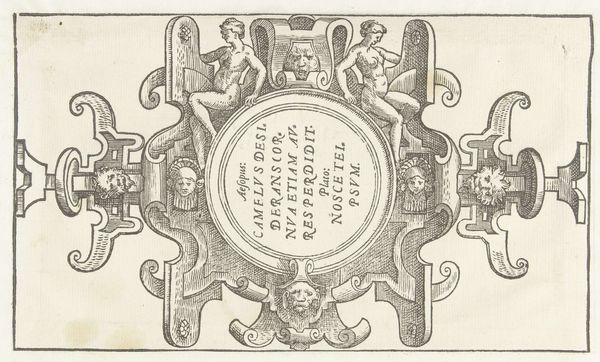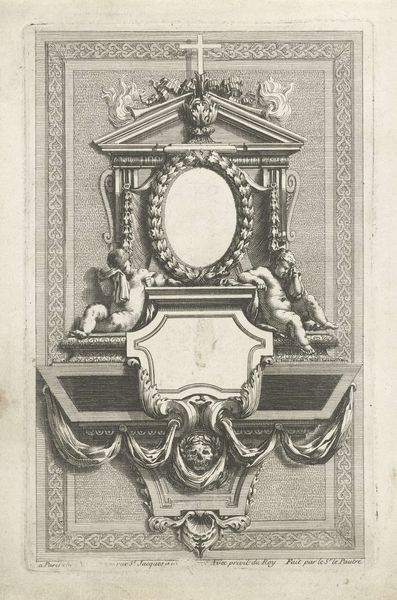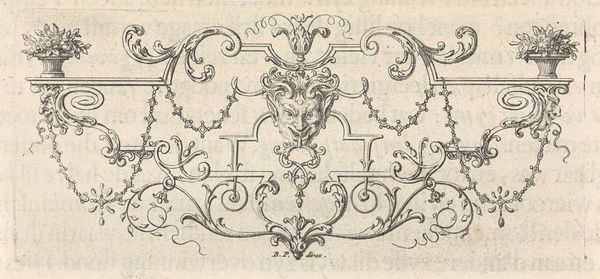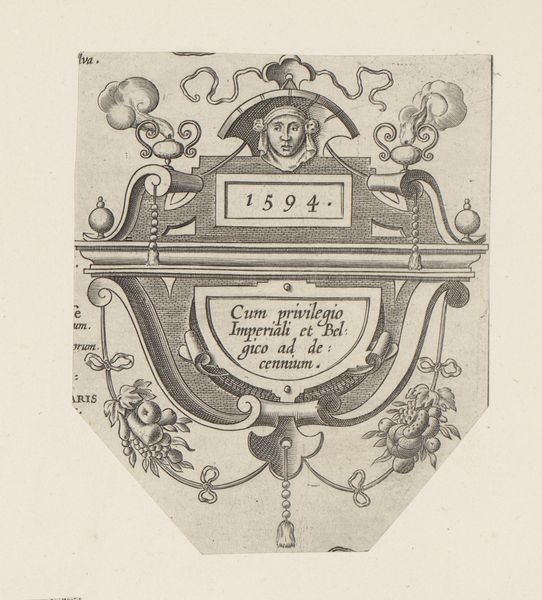
print, engraving
# print
#
old engraving style
#
11_renaissance
#
geometric
#
engraving
Dimensions: height 89 mm, width 136 mm
Copyright: Rijks Museum: Open Domain
Editor: Here we have "Cartouche met een mascaron," an engraving from 1584 by an anonymous artist. I'm immediately drawn to the detail, it is incredible. What strikes me is the text framed by the rather grotesque mask. What do you make of the combination? Curator: This print exemplifies the complex relationship between power, patronage, and visual culture in the late 16th century. The cartouche, meant to display information, is here framed by a grotesque mascaron, common in Renaissance ornament. Note the inscription: "Privilegio Imp. et Reg. Maiest. necnon Ordinum Belgicor. ad decennium." Editor: Could you translate that for me? Curator: Certainly, roughly translated, "By privilege of the Holy Roman Emperor and Royal Majesty, and also of the Estates of Belgium, for ten years." This suggests that the print itself – perhaps part of a larger map or publication – was protected by law, a privilege granted by powerful political entities. The printing of maps was crucial to maintaining control of territory. Consider what it meant to have the ability to control not just land but its graphical depiction! Editor: So, the image isn't just decorative; it's conveying information about power structures and intellectual property of its time? Curator: Precisely! The mascaron, while seemingly bizarre, signals a learned, classical style which also signals a claim to authority. These weren’t simply images, they were embedded in systems of control and dissemination of knowledge. Do you see how it challenges our concept of merely viewing art for aesthetic reasons? Editor: That’s fascinating; I had focused on the odd face, completely missing the bigger picture concerning who gets to control images. Thanks, that has opened up a whole new way of interpreting this! Curator: Indeed, thinking about the social life of images changes everything. It certainly highlights the need to think beyond stylistic interpretation when analyzing art.
Comments
No comments
Be the first to comment and join the conversation on the ultimate creative platform.
